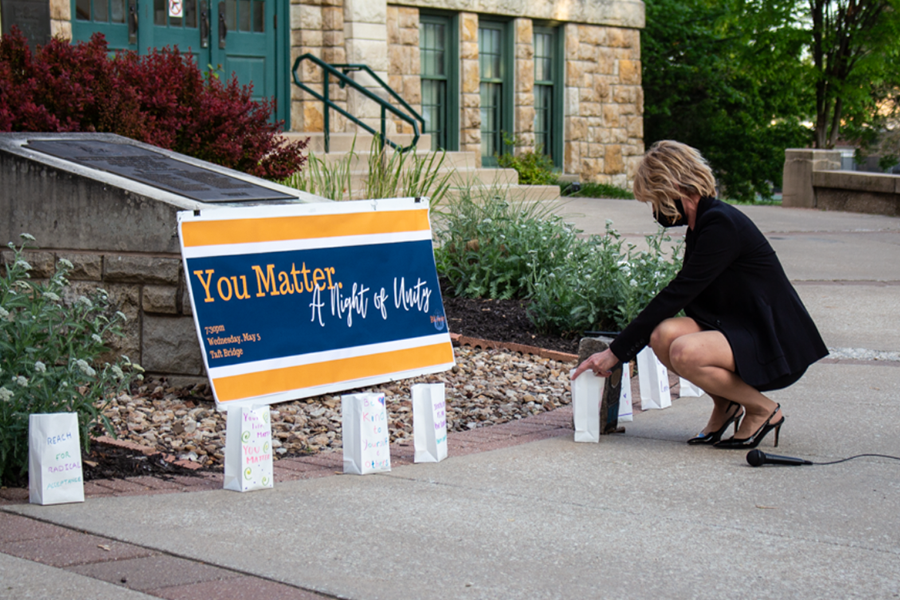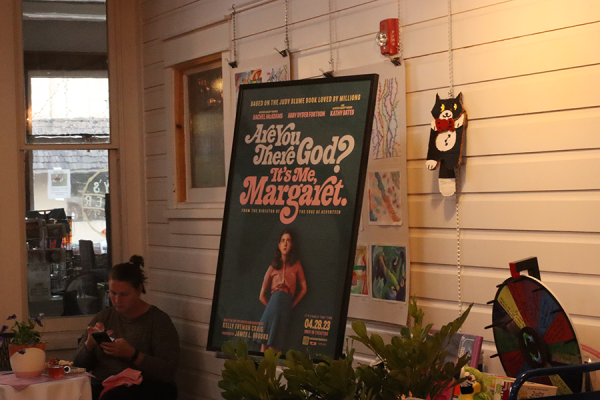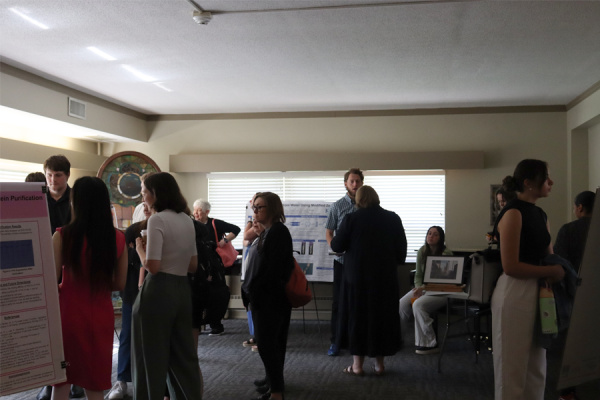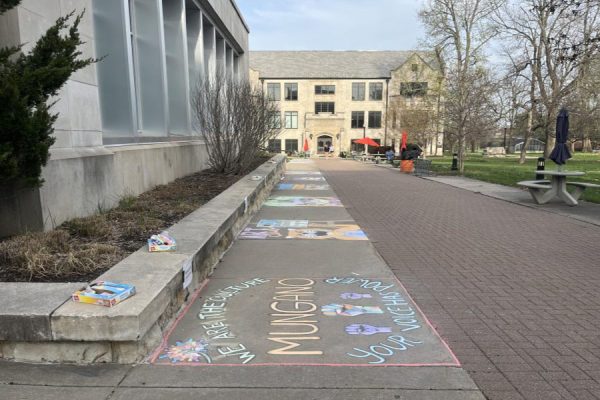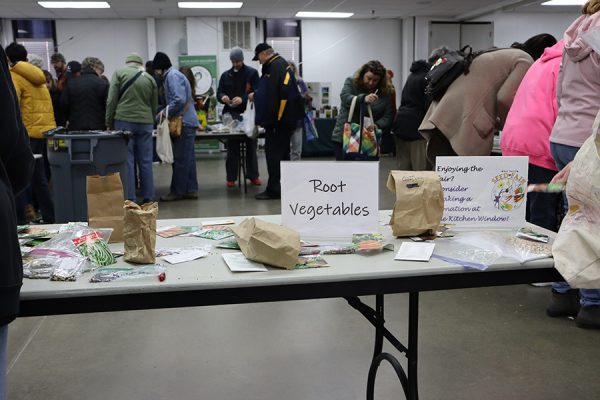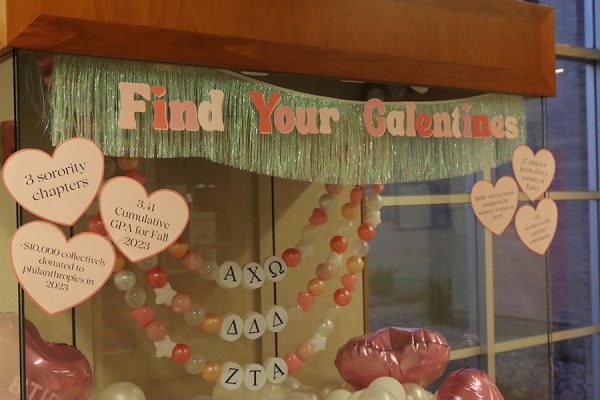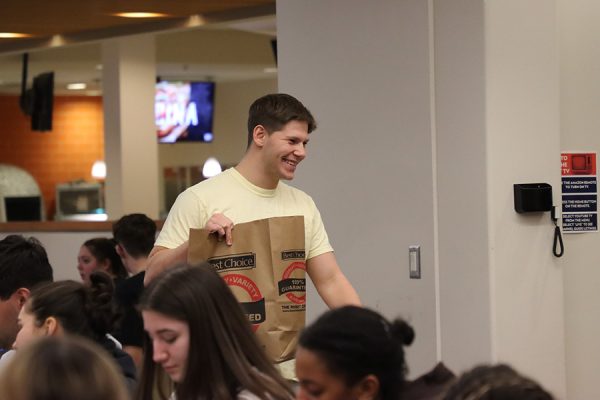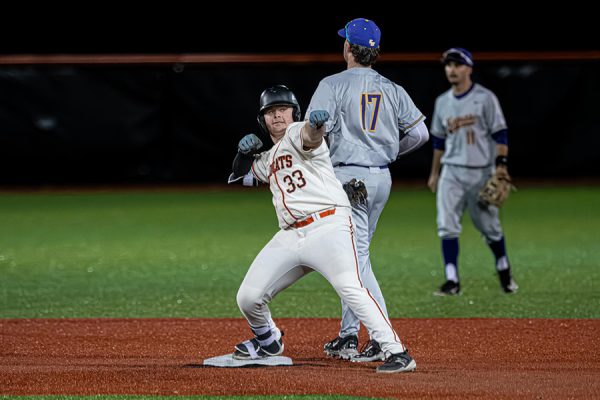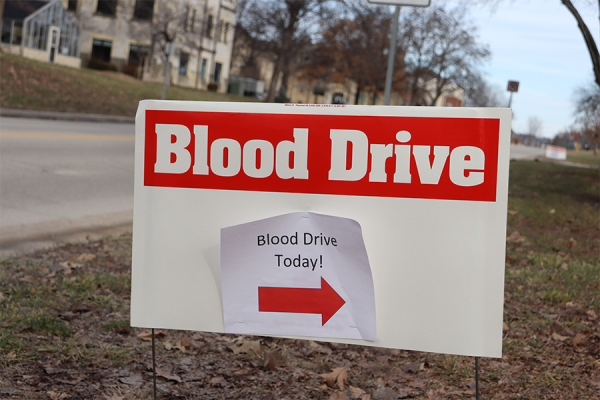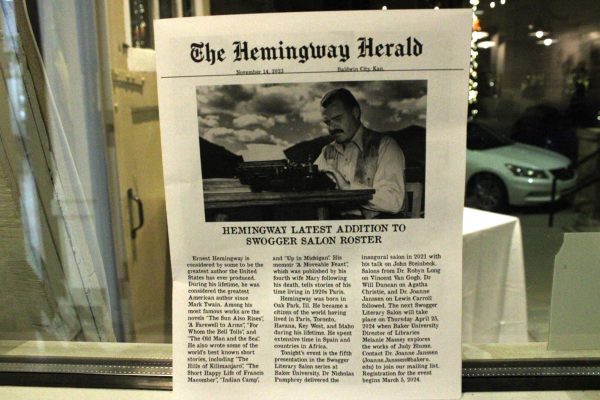“A Night of Unity” highlights race and ethnicity issue awareness
Baker University’s Total Equality Alliance (TEA), Mungano, Molcajete and Baker University President Lynne Murray’s Diversity, Equity and Inclusion working group initiative teamed up with Baker’s Race and Ethnicity class to provide a night of awareness for issues surrounding race and ethnicity in various minority groups.
Wednesday evening, the Race and Ethnicity class delivered their final speech for the course. But, unlike a traditional final, they took their presentations outside at the front of Mabee Hall for a Night of Unity.
The Race and Ethnicity class, taught by Assistant Professor of Sociology Michelle Deming, split up into different groups to research various categories recognized by the United States’ census: Hispanic, Asian-American, African-American and Native Hawaiian.
“[The census’ categories], unfortunately, lump a bunch of folks together who shouldn’t be lumped together,” Deming said. “But what we find is that in our everyday understanding of race and ethnicity, we still use those categories and unfortunately those are also driven by stereotypes.”
All of Baker’s campus was invited to attend the event, as the goal was to bring their findings out of the classroom. Everyone either sat on the lawn or the wall surrounding the plaza. One by one, each group presented their research and included information about their history, how they have been marginalized and also of their successes. The involved student organizations also took part in presenting information.
“Our original final was a twenty minute presentation and Deming wanted to get something outside of the classroom,” Senior Lindsey Rindt said. “Because, in class, we all sort of agree but we wanted to show what we worked on in class and to bring awareness to the campus. White privilege is not seen by people who have it.”
The class’s primary focus was on “intersectionality” between different marginalized groups. According to YW Boston, “intersectional theory asserts that people are often disadvantaged by multiple sources of oppression” such as gender, race, class and sexual identity.
“You can have two Black women, but the truth is that if you look at one of them who’s higher class ― let’s say Michelle Obama ― versus someone who is experiencing homelessness,” Deming said, “they have very different experiences as being Black women simply because of their social class position. We really want to listen to people, and we have to account for all of those facets of their identity.”
Some of these students reflected intersectionality in their presentations. For example, one group talked about the erasure of Two Spirit individuals in Native American tribes. Another group discussed gender roles within Hispanic cultures. But the goal of each presentation was to focus on a marginalized group that may not always be talked about.
“Things are easier than they were in the past, so people tend to forget or not think about it or not want to learn because they don’t want to go through and realize what the history was,” Junior Tristan Mcgee said. “But I think we need to remember that, talk about it and not be secretive about it so it doesn’t happen again.”
But the conversation did not come to an end when the presentations did. After the final speech, members of the class joined their audience to make sources by a campfire to chat with one another about what they learned. As it grew darker, the luminaries lining Taft Bridge glowed as a symbol of their commitment to diversity on campus.
“These are hard conversations to have and this is a place of beginning. The luminaries are lit as a hypervisible example of our commitment to tackling these head on,” Deming said. “Is it going to happen overnight? No. Is it going to be easy? No. But we are here and we are willing to do the work. And part of that work is checking our own blindspots.”
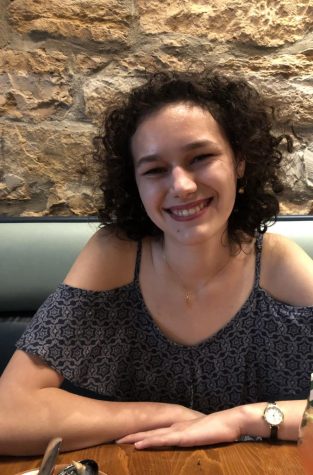
Maria Gutierrez is a senior from Salina, Kan. She is a mass media major and a part of the Alpha Chi Omega sorority. In her spare time, she enjoys writing,...


